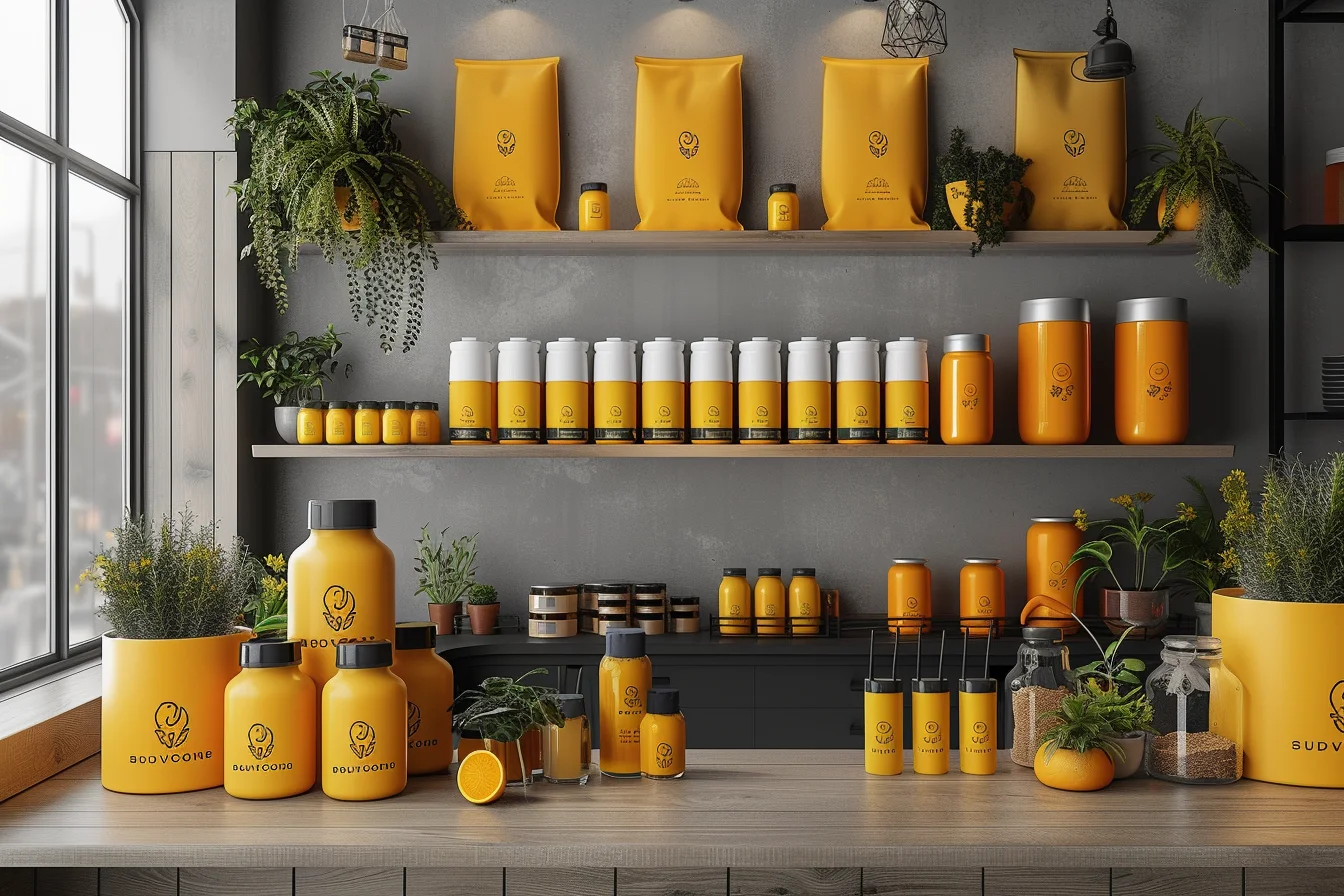Brand loyalty is the ultimate aim of marketing jargon. Every business wants customers who will never waver in their support for their brand. Let’s discuss five essential tactics that each company may use to increase consumer loyalty.

Creating a Brand Identity
Identity is crucial when it comes to branding. It establishes the framework for every other facet of a brand. The first step in fostering enduring audience devotion is creating a strong and distinct brand identity. The focus of this debate is on the value of brand identity and practical methods for creating it.
Brand identity includes a company’s distinctive principles, messaging, and outward look that set it apart from competitors. It embodies the essence of the brand, both in its whole and in its external manifestation. People are more likely to recognize and trust a brand that has a strong identity, which also helps to set it out in a crowded market.
Learn how to make your brand stand out in a crowd:
Strategy: Define a clear and powerful brand identity
If any brand wants to increase brand loyalty, it should develop a brand identity that connects with its target audience. They can do this by clearly communicating their brand’s goal, vision, and values. Brands must think about what they are enthusiastic about. What do they stand for? What differentiates them from their competitors? These questions can help brands establish the core of their company’s identity and provide the groundwork for creating loyalty.

The brand should then think about the visual components, such as the font, color scheme, and logo. These components, which express the essence and core principles of the brand, have to be maintained throughout all touchpoints. Establishing trust with the audience and strengthening brand awareness are the goals of a well-designed logo and unified visual identity.
Lastly, the brand has to have a message plan and voice that are consistent with its tone and character. It is important to uphold consistency in the brand voice throughout all forms of communication, ranging from social media postings to customer service encounters, regardless of whether it is humorous and playful or serious and professional.
Learn more about how to make your brand iconic:
Some Pointers for Efficient Brand Identity Definition
- To successfully understand the target audience and rivals, market research should be carried out.
- The organization’s key stakeholders should work together to establish the purpose, vision, and values of the brand.
- A coherent and aesthetically pleasing brand identity should be created by a qualified designer.
- To make sure the target audience resonates with the brand identity, focus groups or surveys should be used to test it.
Successful Brand Identity Examples

1. Nike
- Vibrant, Inspirational Messaging: Nike is well known for its potent and motivational advertising campaigns, which frequently highlight athletes pushing limits and conquering obstacles. Themes like tenacity, drive, and accomplishment are tapped into in this messaging to make an impact on customers.
- Iconic Swoosh Logo: The swoosh, which serves as Nike’s emblem, is among the most well-known icons worldwide. Its dynamic design and simplicity communicate movement and energy, which is in line with the brand’s emphasis on performance and athletics.
- Symbolizing Athleticism, Inventiveness, and Tenacity: Nike’s brand identity is inextricably linked to these qualities. Nike encourages its customers to push themselves beyond their comfort zones and aim for greatness through its sponsorships, marketing initiatives, and merchandise.

2. Apple
- Elegant, Simple Design Style: Apple is well-known for its simple, elegant designs that emphasize attention to detail, clean lines, and simplicity in their products. Apple’s dedication to grace, refinement, and user-centered design concepts is reflected in its design language.
know more about the significance of minimalism in design:
- Representing Advanced Technology, Sophistication, and Simplicity: Apple’s brand identity is a perfect combination of refinement, modern technology, and simplicity. Its products push the limits of innovation and technical progress while simultaneously being simple and easy to use.

3. Coca-Cola
- Classic Logo: The iconic red color and unique cursive style of the Coca-Cola logo make it easily recognizable throughout the globe. The emblem, which has been essentially the same for more than a century, stands for authenticity, history, and continuity.
- Nostalgic branding: Coca-Cola’s branding touches on recollections of shared events and moments to arouse sentiments of nostalgia and emotional connection. The company’s enduring commercials, which highlight themes of pleasure, happiness, and community, speak to people of all ages and backgrounds.
Coca-Cola is a globally recognized brand that has gained immense awareness due to its deeply established brand identity in popular culture. It is one of the most recognizable brands in the world. Its branding has made it a beloved and enduring icon around the globe, connoting enjoyment, refreshment, and the little joys in life.
These examples show that strong brand identities come from blending visuals, messages, and values that connect with people’s hearts and minds. When brands stay true to what they believe in and keep delivering experiences that captivate, they build deep, lasting relationships with their audience

Providing Uniform Brand Experiences
The foundation of brand loyalty lies in consistency. Customers’ trust and familiarity with a brand increase as they encounter consistent brand experiences across multiple touchpoints, thereby reinforcing their loyalty. let’s take a closer look into the significance of delivering consistent brand experiences and provide strategies for achieving this goal.
The uniformity of language, visual components, and overall brand presentation across all platforms and interactions is referred to as consistency in branding. Every touchpoint—be it a social media post, a product box, or an in-store encounter—should continuously convey the brand’s identity and core values.
Examine the color theory tips for effective branding:
Strategy: Deliver Consistent Brand Experiences Across All Touchpoints
Delivering consistent brand experiences across all touchpoints where individuals interact with the business is crucial to fostering brand loyalty. One can start by conducting a comprehensive audit of all brand touchpoints, including the website, social media accounts, physical storefronts (if applicable), promotional materials, and correspondence with customers.
Next, make sure that all of the brand’s elements such as typefaces, colors, logos, and messaging are applied uniformly and consistently throughout all touchpoints. This fosters audience trust and strengthens brand awareness. To ensure consistency, think about developing brand guidelines that specify how to use these assets.
Employees and customer service teams should also receive the training they need to properly convey the brand’s voice and values to customers. Every interaction—whether it’s providing product suggestions, resolving complaints, or answering inquiries—should always represent the company’s brand and core values.
Easy Ways to Maintain Brand Consistency
- Provide thorough brand guidelines that spell out expectations for the use of the logo, color schemes, fonts, and message.
- To guarantee quick access to brand assets and uphold brand consistency across teams and channels, make use of digital asset management solutions.
- Keep a close eye on and audit all brand touchpoints to spot any discrepancies and quickly address them.
- To make sure that brand experiences live up to customers’ expectations and complement their opinions of the brand, get feedback from them.
Case Studies Demonstrating Consistent Brand Experiences

3. Starbucks
- Standardized Retail Layouts, Menus, and Procedures: Throughout its hundreds of locations globally, Starbucks maintains uniformity in its customer service protocols, menus, and retail layouts. This means that customers can anticipate a familiar setting, menu selections, and quality of service whether they visit a Starbucks in Tokyo or New York City. Customers benefit from this consistency because they know what to anticipate no matter where they are, which fosters trust and loyalty.

4. Amazon
- Smooth Online Buying: From product search to checkout, Amazon is renowned for providing a flawless online buying experience. The website demonstrates its dedication to providing clients with consistent brand experiences with its user-friendly layout, tailored suggestions, and quick checkout procedure. Whenever a client needs food, gadgets, or books, they can count on Amazon to deliver a simple and convenient purchasing experience. Amazon’s reputation as a dependable and customer-focused company is strengthened by this consistency.

5. McDonald’s
- Globally Known Logo, Uniform Store Design, and Food Selections: McDonald’s upholds brand coherence with its globally known logo, uniform store design, and consistent food selections throughout all of its global locations. Customers will recognize the recognizable golden arches, recognizable interior design features, and a menu with standout products like the Big Mac and fries whether they visit a McDonald’s in Beijing or Paris. In addition to ensuring that consumers recognize the brand and have the same experience everywhere they go, this consistency also helps to enhance brand recognition.
Let us delve into why visual harmony is important:
.
These case studies show how companies like McDonald’s, Starbucks, and Amazon put a high priority on consistency in their brand experiences to cultivate consumer familiarity, loyalty, and trust. Through the standardization of essential components like menu items, web interfaces, and shop layouts, these brands guarantee a dependable and uniform client experience across all platforms and locations.
Making Customer Engagement a Priority
In the ever-changing world of brand loyalty, consumer interaction is essential. Establishing a genuine connection and fostering loyalty with clients is the first step toward building long-lasting partnerships. The encounters and experiences that consumers have with a brand throughout their journey are referred to as customer engagement. It includes a broad variety of activities, including email correspondence, loyalty plans, social media engagements, and community outreach initiatives. Making customer involvement a top priority is crucial for developing strong bonds with the audience and increasing brand loyalty.

Strategy: Prioritize Meaningful Customer Engagement Initiatives
Making genuine relationships and interactions with consumers a top priority is essential for developing brand loyalty. To begin, get familiar with the audience’s tastes, habits, and requirements. Learn what connects with the audience through data analytics and consumer feedback, then adjust the engagement strategies appropriately.
Next, make good use of a variety of channels and touchpoints to interact with the consumers. Personalized communications, social media, email marketing, and events—all work well when brands use channels that fit the tastes and routines of the target audience. Delivering experiences and material with additional value that connects with the audience and meets their wants and interests should be the brand’s main priority.
To encourage participation and recurring business, think about introducing loyalty or incentive programs. Reward or privilege loyal consumers with special discounts, gifts, or benefits to keep them interested in the business and turn them into brand ambassadors.
Advice on Implementing Successful Customer Engagement Strategies
- Be authentic and genuine in interactions with customers, fostering trust and credibility.
- Listen to customer feedback and utilize it to continuously improve and refine engagement efforts.
- Monitor engagement metrics and KPIs to track the effectiveness of initiatives and make data-driven decisions.
Brands that Maintain Meaningful Customer Engagement
I) LEGO: Through community-driven projects and user-generated material, LEGO actively interacts with its patrons. Fans may participate in the brand’s product development process by submitting their concepts for new LEGO sets through the LEGO Ideas portal. In addition to increasing consumer involvement, this cooperative strategy gives LEGO lovers a stronger sense of loyalty and ownership.
II) Sephora: One of the best examples of how Sephora values client loyalty and participation is the Beauty Insider program. Sephora cultivates a feeling of community among beauty aficionados and rewards its most devoted consumers with VIP events, personalized suggestions, and unique benefits. To foster consumer loyalty and advocacy, the program promotes continuous participation and repeat business.
Unpack the importance of customer feedback in branding:
These brand examples demonstrate how prioritizing customer engagement can lead to stronger relationships, increased loyalty, and ultimately, business success. By leveraging various strategies and platforms to engage with customers on a meaningful level, brands can create positive experiences that resonate and foster long-term connections.

Delivering Superior Customer Service
In the realm of brand loyalty, exceptional customer service stands as a cornerstone. The way a brand interacts with its customers can significantly influence their perception, satisfaction, and ultimately, their loyalty.
Approach: Deliver Superb Client Care at All Points of Contact
Exceptional customer service at every point of contact between customers and the company is essential to fostering brand loyalty. To ensure that the customer service personnel have the information, abilities, and tools needed to successfully and sympathetically handle client demands, the first step in this process is to engage in thorough training for them.
Empower the customer service teams to go above and beyond to exceed customer expectations. Encourage them to actively listen to customers, demonstrate empathy, and take ownership of resolving issues promptly and satisfactorily. By prioritizing customer satisfaction and delight, one can turn ordinary interactions into extraordinary experiences that strengthen loyalty.
Make use of tools and technology to improve and expedite the customer service process. Provide omnichannel support solutions so that clients may use their chosen method of communication i.e. phone, email, chat, or social media to get help. Use AI-powered chatbots to provide clients with self-service choices and immediate help so they may independently research the solutions to their inquiries.

Suggestions for Providing Outstanding Customer Service
- Be available and accommodating to clients across all available channels, guaranteeing prompt and tailored assistance.
- Before they become issues, foresee and proactively address the requirements and pain areas of the customers.
- To continually enhance and improve the customer service procedures and practices, get input from customers, and take appropriate action.
Exemplary Customer Service Instances
I) Zappos: Zappos is well known for its illustrious customer service, boasting a staff of committed agents who are authorized to go above and beyond to guarantee client pleasure, including providing free returns and round-the-clock assistance.
II) Ritz-Carlton: The Ritz-Carlton is renowned for its “Gold Standard” of customer service, which gives staff members the freedom to surpass guests’ expectations at every touchpoint by providing them with individualized, unforgettable experiences.
Hence, providing exceptional customer service emerges as a cornerstone of building brand loyalty. By prioritizing outstanding service at every touchpoint, empowering teams, leveraging technology effectively, and learning from real-world examples, individuals can create memorable experiences that foster trust, loyalty, and advocacy among customers.

Developing Emotional Bonds
In the realm of brand loyalty, emotional connections hold immense power. Brands that successfully forge emotional bonds with their audience create a sense of belonging, trust, and affinity that transcends mere transactions. In this final strategy for building brand loyalty, the importance of fostering emotional connections will be explored, alongside discussions on strategies for achieving them effectively. The foundation and essence of brand loyalty are emotional relationships. Customers are more inclined to stick with a brand and fervently support it when they have an emotional connection to it. Brands can build enduring relationships and loyalty by creating experiences that resonate deeper with their audience by understanding their emotional needs and goals.
Strategy: Encourage Emotional Bonds with the Audience
Initiatives that encourage emotional ties with the audience must be prioritized if brands want to increase brand loyalty. Understanding the ideals, convictions, and goals that the target audience finds appealing is a good place to start. To arouse feelings and foster a feeling of common identity and purpose, use messages, images, and narrative.
Craft compelling narratives that highlight the human side of the brand—its history, values, and impact on people’s lives. Share stories of triumph, inspiration, and resilience that resonate with the audience’s emotions and aspirations. By weaving storytelling into the brand’s DNA, one can create authentic and meaningful connections that foster loyalty and advocacy.
Provide audiences with unforgettable experiences that arouse good feelings and make a lasting impact. Personalized encounters, immersive events, or moments of surprise and joy are just a few of the innovative ways people may connect emotionally with their audience and make them feel important and appreciated.
Methods for Establishing Emotional Bonds
- Storytelling: Use storytelling to connect with the audience on an emotional level and humanize the brand.
- Personalization: Tailor interactions and messages to the interests and requirements of every client to make them feel valued and acknowledged.
- Authenticity: Uphold sincerity and openness in dealings with clients to build credibility and trust.
Learn more about the factors that evoke emotions in branding:

Examples of Emotional Connections
I) Dove: Dove’s “Real Beauty” campaign celebrates diversity and challenges beauty standards, resonating with audiences on a deeply emotional level and fostering brand loyalty.
II) Airbnb: Airbnb’s “Belong Anywhere” campaign tells stories of travelers finding belonging and connection in new and unfamiliar places, evoking feelings of wanderlust and adventure.
In summary, this article has examined five successful methods for fostering brand loyalty, highlighting the significance of each element in developing durable relationships with consumers. Gaining and keeping the trust of customers depends on a variety of strategies, including developing a distinct brand identity, offering consistent experiences, emphasizing client interaction, offering first-rate customer service, and creating emotional bonds.
Brands may position themselves for long-term success in the cutthroat industry of today by putting these tactics into practice. Dedication, consistency, and a thorough comprehension of the wants and needs of the target audience are necessary for developing brand loyalty. Selling goods and services isn’t the only thing to do; there is also a need to create experiences that are significant and appeal to clients’ emotions and reasoning.
Companies that put a high priority on brand loyalty will benefit from higher customer retention, advocacy, and profitability. Brands may establish a devoted client base that will back them through difficulties and changes, guaranteeing ongoing development and success in the years to come, by investing in developing strong relationships with their audience.



